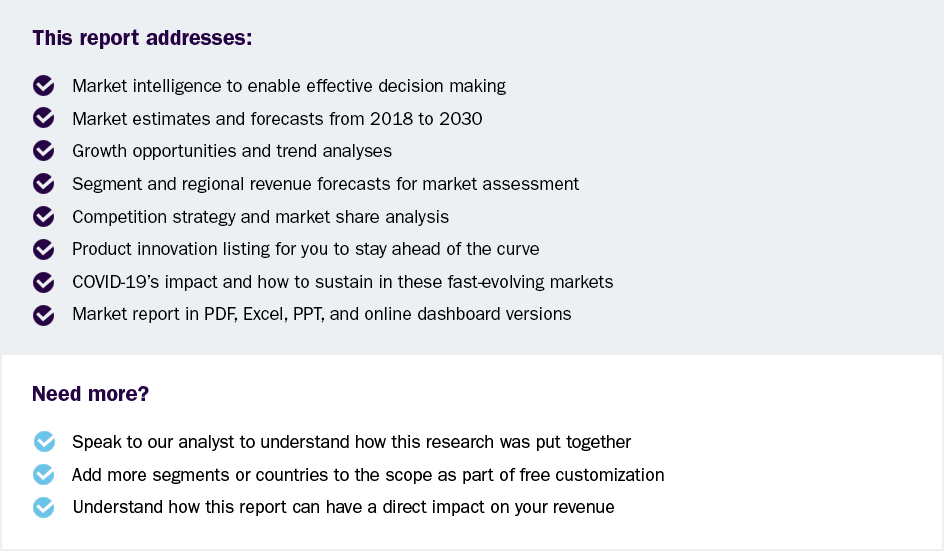Neem Extracts Market Size To Reach $3.96 Billion By 2030
Neem Extracts Market Growth & Trends
The global neem extracts market size is expected to reach USD 3.96 billion by 2030, registering a CAGR of 11.3% during the forecast period, according to a new report by Grand View Research, Inc. The rising importance of biofertilizers in developed regions including North America and Europe owing to stringent government regulations on the use of chemical fertilizers is likely to boost neem extracts market over the forecast period. Moreover, neem extracts are extensively used in the manufacture of high-quality herbal cosmetics and beauty products. Demand for these products is increasing globally owing to their efficiency and low side effects which are expected to result in high demand.
Growing demand for biopesticides and bioinsecticides is likely to drive the neem extracts market over the next six years. Hostile responses received from consumers on the use of chemical fertilizers owing to environmental and health concerns are expected to drive the neem extracts market, especially in Europe and North America. In addition, biofertilizer growth in emerging economies including India, China, and Brazil is expected to augment neem extracts market over the forecast period. However, lack of availability of raw materials in developed regions owing to unfavorable climatic conditions and high prices are anticipated to restrain neem extract market growth.
 Request a free sample copy or view report summary: Neem Extracts Market Report
Request a free sample copy or view report summary: Neem Extracts Market Report
Neem Extracts Market Report Highlights
-
Neem extract market demand in personal care products segment is expected to grow substantially. However, the segment is expected to witness the fastest growth on account of gaining the importance of herbal cosmetics and beauty products especially in Asia Pacific and Europe.
-
Growing demand for bio-based fertilizers in emerging markets of India and China due to rising health awareness coupled with environmental concerns is expected to have a positive impact on the neem extract market in the near future.
-
Asia Pacific was the largest neem extract market, accounting for more than 46.3% of global revenue in 2023. Increased R&D expenditure by health care companies towards new technology development coupled with increasing use of neem-based products in North America and Europe is expected to augment market demand.
-
Europe is expected to witness growth on account of increasing adoption of neem-based fertilizers and herbal beauty products in the personal care segment.
-
Key market participants include E.I.D Parry India Ltd., Agro Extracts Ltd, Ajay Bio-Tech Ltd, Kancor Flavors and Extracts Ltd., and Neeming Australia Pvt. Ltd. The global market for neem extracts was highly fragmented due to the presence of numerous companies, especially in the Asia Pacific. Product innovation and strategic alliances with application users are expected to be critical success factors for market participants. Raw material availability in China and Brazil is expected to open new market avenues over the next six years.
Neem Extracts Market Segmentation
Grand View Research has segmented the global neem extracts market based on application, and region:
Neem Extract Application Outlook (Volume in Kilotons; Revenue, USD Million, 2018 - 2030)
-
Personal Care
-
Pharmaceutical
-
Fertilizers
-
Animal Feed
-
Others
Neem Extract Regional Outlook (Volume in Kilotons; Revenue, USD Million, 2018 - 2030)
-
North America
-
U.S.
-
-
Europe
-
Germany
-
UK
-
Italy
-
-
Asia Pacific
-
China
-
Japan
-
India
-
-
Latin America
-
Brazil
-
-
Middle East and Africa (MEA)
-
Saudi Arabia
-
List of Key Players in the Neem Extracts Market
-
Parker Biotech Private Limited
-
Agro Extracts Limited
-
Fortune Biotech
-
Ozone Biotech
-
PJ Margo
-
GreeNeem
-
Trifolio-M
-
EID Parry
-
Herbal Creation
-
Phyto Life Sciences P. Ltd.

